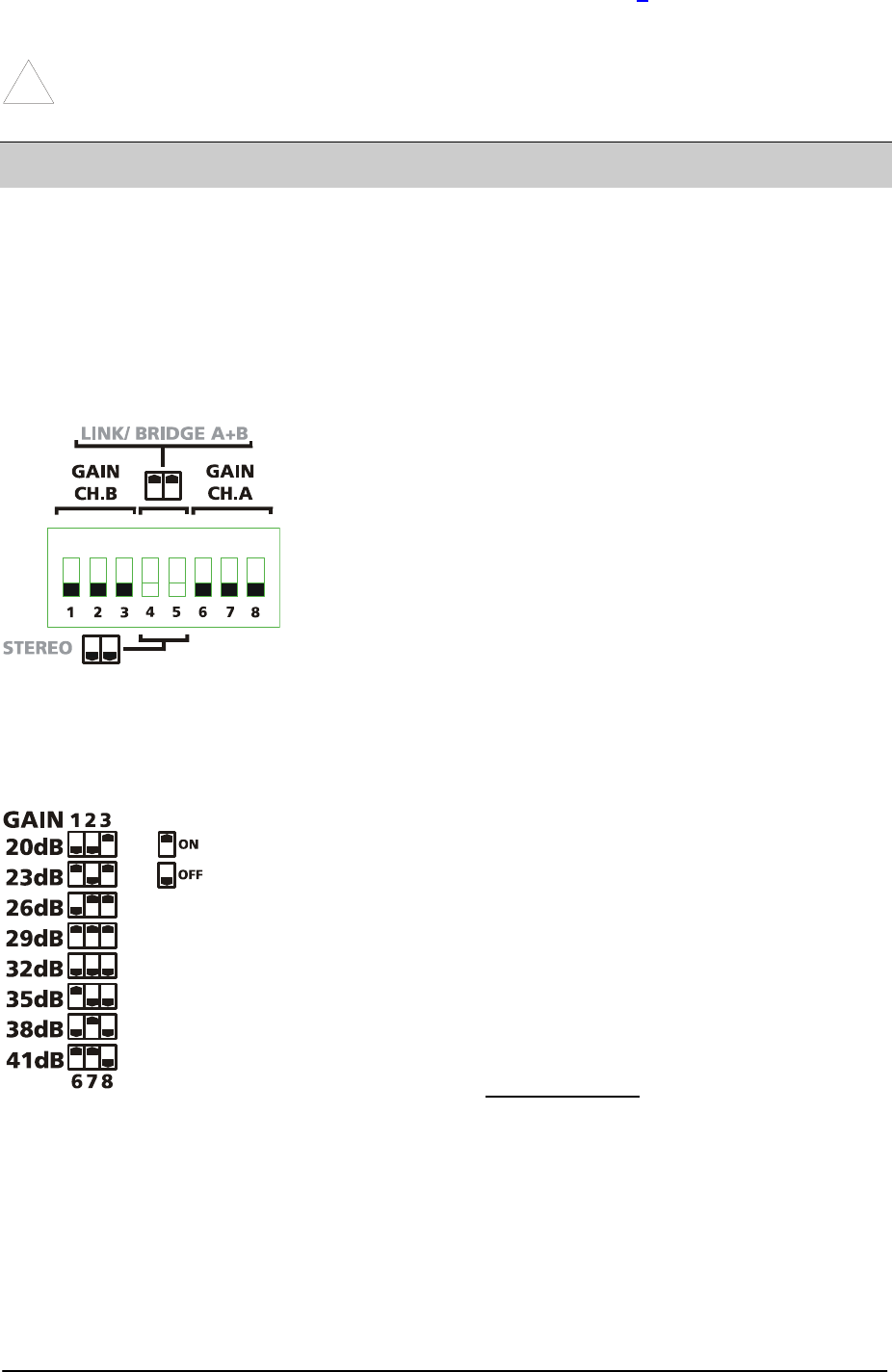
8. Gain switch channel A. Three of the switches in the DIP-switch selects the maximum gain of
the channel to be either 20, 23, 26, 29, 32, 36, 39 or 41 dB. (See page 6
).
9. AC power cable. WARNING!
A label just below the mains cable on the rear of the amplifier indicates the AC
mains voltage, for which the amplifier is wired. Connect the power cable only to the
AC source referred to on the label.
!
5 REAR PANEL FEATURES
5.1 Gain switch
The gain switch located on the rear panel (the central DIP-switch) changes the input sensitivity of the
amplifier. This can be handy when using low or high nominal input signals. E.g. most professional
mixing consoles operate at a nominal level of +4 to +6 dBu; therefore you may use the 32dB position
to provide you with plenty of fader movement. On the other hand, for a disco mixer operating at a
nominal level of 0dBu or less use the higher gain positions.
5.1.1 The DIP-switch
There are separate sections for the two channels, so different gain
can be selected for channel A or B. The selection of maximum gain
in the amplifier is always a trade between noise and headroom. A
low gain amplifier amplifies less of the noise of the preceding
equipment (mixer, crossover, equalizer etc.). On the other hand a
higher lever is needed to get full power, so the headroom will be
decreased on mixer output and/or crossover units. In an actively
divided system there is very often a so-called loudspeaker
processor or controller involved, being unique for the loudspeaker
system. In most cases the manufacturers of these processors
and/or loudspeakers recommend a specific system gain for the
amplifiers.
There are eight positions with different gain, from 20dB to 41dB in 3dB steps. See the different
settings for the DIP-switches in the table below. The three switches to the very left are for channel B,
and the three to the very right are for channel A.
5.1.2 Sensitivity
Sensitivity is defined as how many volts (rms) or dBu (referred to
0.775Vrms) are required to get full output power. As the output power
varies with the load impedance, usually 4 ohms is the reference. But in
case of an MLS-switch equipped amplifier there are enough choices for full
output levels into different load impedances for a sensitivity table to fill
several pages.
Hence we recommend calculating the sensitivity if this is necessary. Our
”Audio calculator” can do this, which is an Excel file with many useful
formulas. It contains help for setting up digital loudspeaker processors and
can be found on our website: www.tannoy.com
.
The sensitivity calculator is found in the box labeled “Amplifier gain conversions”. The values to enter
are in red; desired output power (see MLS-table), load impedance and the selected maximum gain.
The sensitivity is in the box labeled “Input level for clip” in Vrms or dBu
5.13.Options
As the DIP-switch is recessed, one can put a sticker across the bay and prevent from unauthorized
changes. Another option is to remove the DIP-switch. This should be done by authorized service
personnel only! This corresponds to all switches set to “off”, i.e. 32dB gain and stereo mode.
Tannoy Limited
TA 1400 User Manual 11-06-02
6


















